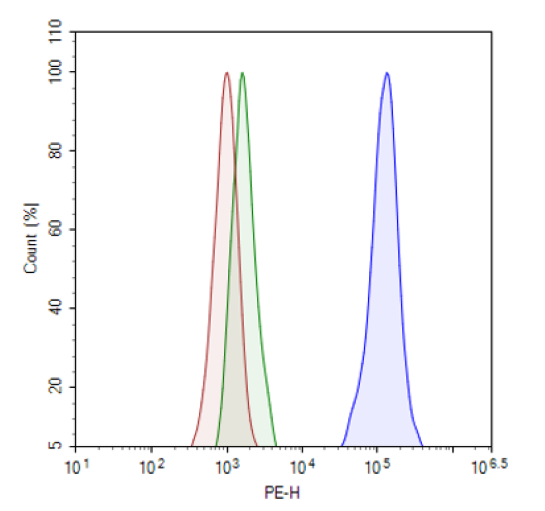CD19 Knockout Raji Cell Line
CD19 Knockout Raji Cell Line is a Raji cell line where CD19 (Cluster of Differentiation 19, B-lymphocyte surface antigen B4, or CVID3) has been genetically removed from Raji cells using CRISPR/Cas9 genome editing.
Purchase of this cell line is for research purposes only; commercial use requires a separate license. View the full terms and conditions.
| Name | Ordering Information |
| Thaw Medium 2 | BPS Bioscience #60184 |
The cell line has been screened to confirm the absence of Mycoplasma species.
The Raji line was established from a Burkitt's lymphoma patient. Raji cells constitutively express B cell antigens CD19, CD20, and CD22, and offer a physiologically relevant platform to evaluate cancer-directed immunotherapies such as Chimeric Antigen Receptor (CAR) T-cells.
CD19 (also known as Cluster of Differentiation 19, B-lymphocyte surface antigen B4, or CVID3) is a glycoprotein expressed at the surface of B lymphocytes through most phases of B cell maturation. It is strictly required for B cell terminal differentiation. Mutations in the CD19 gene cause severe immune-deficiency syndromes associated with impaired antibody production, such as CVID3 (common variable immuno-deficiency 3). The majority of B cell malignancies express normal to high levels of CD19, making it a nearly ideal target for cancer immunotherapy. Blinatumomab, a CD19/CD3 bi-specific T cell engager (BiTE) has been approved for relapsed/refractory B precursor ALL (Acute lymphoblastic leukemia) and CD19 was the target of the first approved CAR-T cell therapy. Studies of CD19 function and expression profiles will continue to broaden our knowledge and support broader applications in cancer therapy.



